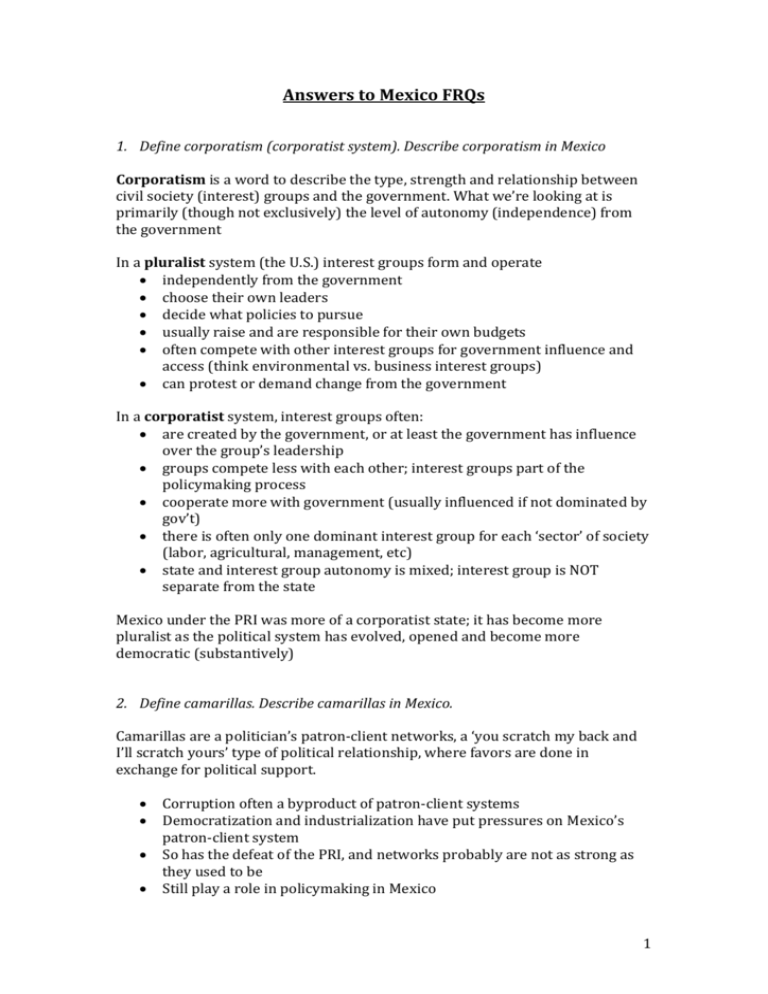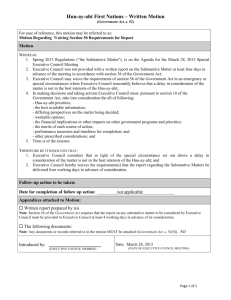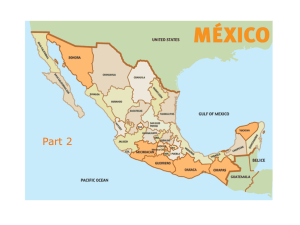Click here for the Mexico FRQ Answers
advertisement

Answers to Mexico FRQs 1. Define corporatism (corporatist system). Describe corporatism in Mexico Corporatism is a word to describe the type, strength and relationship between civil society (interest) groups and the government. What we’re looking at is primarily (though not exclusively) the level of autonomy (independence) from the government In a pluralist system (the U.S.) interest groups form and operate independently from the government choose their own leaders decide what policies to pursue usually raise and are responsible for their own budgets often compete with other interest groups for government influence and access (think environmental vs. business interest groups) can protest or demand change from the government In a corporatist system, interest groups often: are created by the government, or at least the government has influence over the group’s leadership groups compete less with each other; interest groups part of the policymaking process cooperate more with government (usually influenced if not dominated by gov’t) there is often only one dominant interest group for each ‘sector’ of society (labor, agricultural, management, etc) state and interest group autonomy is mixed; interest group is NOT separate from the state Mexico under the PRI was more of a corporatist state; it has become more pluralist as the political system has evolved, opened and become more democratic (substantively) 2. Define camarillas. Describe camarillas in Mexico. Camarillas are a politician’s patron-client networks, a ‘you scratch my back and I’ll scratch yours’ type of political relationship, where favors are done in exchange for political support. Corruption often a byproduct of patron-client systems Democratization and industrialization have put pressures on Mexico’s patron-client system So has the defeat of the PRI, and networks probably are not as strong as they used to be Still play a role in policymaking in Mexico 1 3. Is Mexico a substantive democracy? Support your response, AND address the following:: a. Define substantive democracy b. Describe presidential elections over the past 15 years or so c. Describe the distribution of political power in Mexico Substantive democracy: Having both the procedures of a democratic system along with the substance, so for example: Free, fair elections with possibility of change (that’s what makes it substantive) Open civil society (pluralist) Free press Rule of law Political rights for citizens Generally: Substantive dems have civil rights and civil liberties; often citizens do not in procedural democracies Substantive have rule of law; often procedural dems do not Open civil society (substantive) vs. not in procedural Mexico: Substantive: PRI no longer always wins Economic (neo) liberalization promotes freer civil society/ less gov’t control More competitive political system Media has independence from the govt Courts increasingly used and trusted by citizens Military plays lesser role in policymaking Over past 15 years in Mexico/ distribution of political power: PRI defeated (2X, in 2000 and 2006) The legislature has reasserted itself as a center of policymaking and no longer blindly follows the executive (President); depends what parties are inc control, of course The IFE helps to insure freer, fairer elections Mexican presidency still very powerful, but has declined in power See Wood p. 368 (5th edition) 2 4. Describe and discuss cleavages in Mexico. What are they based on, and provide two events and/or government policies that have come about as a result of these cleavages. Cleavages: Urban/rural Social classes North/ south Amerindian/ Mestizo Northerners: Wealthier (more middle class) Higher levels of education More engaged in trade/ contacts with the US More mestizos More likely to support PAN NAFTA supporters Market-based economy (maquiladoras) More drug trafficking/ violence Southerners Poorer Amerindian Less education More rural/ farmers Less contact with US More likely to support PRI/PRD More patron-client in traditional south Events/ Policies: Chiapas rebellion (Zapatista uprising) and gov’t military response More protests in south NAFTA as attempting to increase trade/ relations with US Ejidos Growing urbanization 5. Define political ideology. Describe the political ideology of the PRI and either the PRD or PAN. Political ideology: Political values or beliefs regarding the basic goal(s) of government and politics Liberalism, communism, socialism, etc. What is the role of government: promote freedom? Equality? Etc. For ideologies of Mexican political parties generally, see Wood pp. 353-356 3





